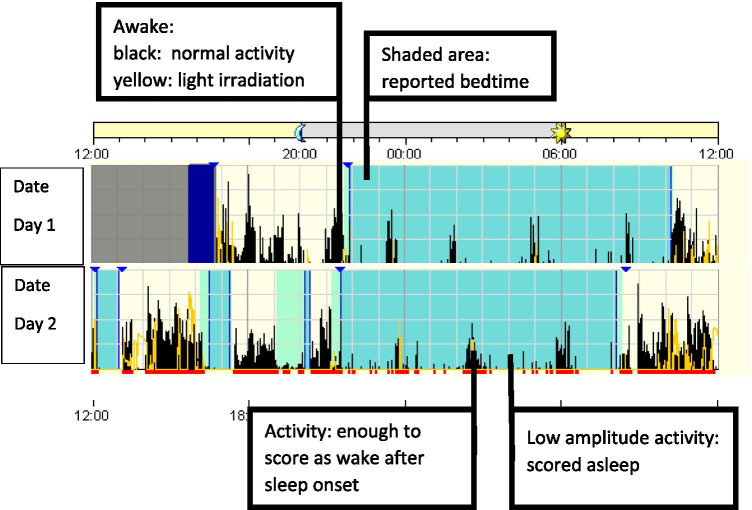Fig. 1.
Exemplified general recommendations for interpretation of wrist actigraphy; general process: example of an ambulatory device with piezoelectric movement measurement. Device is worn for multiple 24-h periods in the natural environment (e.g. 7–14 consecutive days/nights). Usually, a sleep diary is kept parallel to the actigraphy. The information from the sleep diary and the visual markers of the actigraphy (here: blue triangles) are used for data adjustment and support the discussion of the findings with the patient. Technical procedure: device specific software is used to score and analyse the data. Activity counts are translated into epochs (e.g. 30 s/1 min) and algorithm is used to determine if each epoch is “sleep” or “wake”. Depending on algorithm the scoring is based on index epoch plus epochs before and after the index epoch. Data interpretation: shaded area shows reported bedtime (main sleep opportunity). Visible is a longer main sleep phase and several short daytime sleep phases. By using the scoring algorithm, the possible sleep time can be delimited from nocturnal movement phases (activity in black, partly with light irradiation in yellow). Daytime sleep episodes and general activity patterns can be estimated. General daily activity can be estimated and objectified; in particular longitudinal changes of activity patterns can be intra-individually determined

